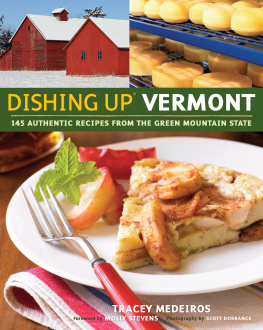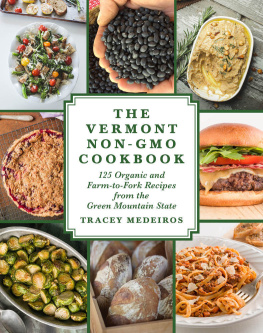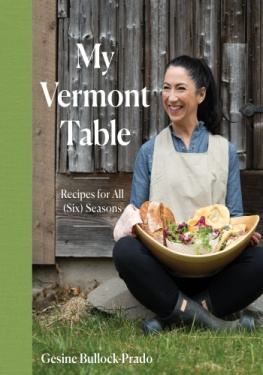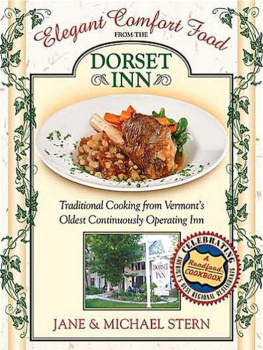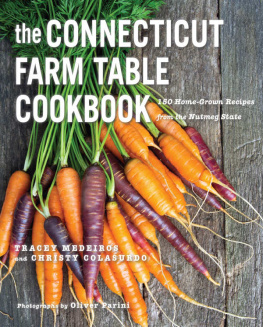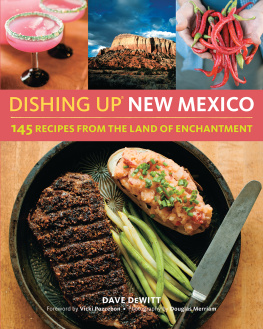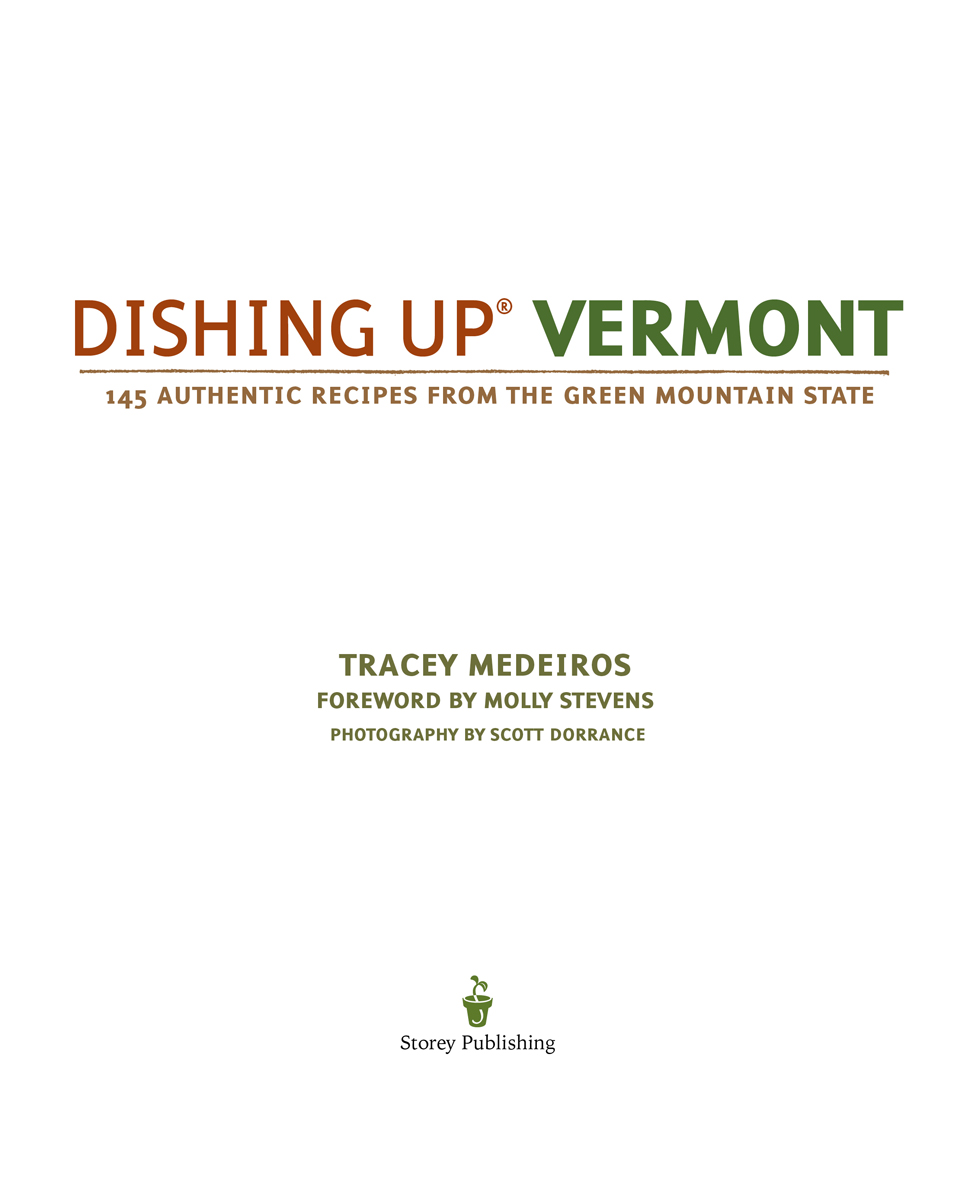DISHING UP VERMONT
The mission of Storey Publishing is to serve our customers by publishing practical information that encourages personal independence in harmony with the environment.
Edited by Margaret Sutherland
Art direction by Dan O. Williams
Cover and text design by Tom Morgan, Blue Design
Map illustration by David Cain
Indexed by Christine R. Lindemer, Boston Road Communications
Text 2008 by Tracey Medeiros
Photography 2008 by Scott Dorrance
Ebook version 2.0
April 15, 2017
All rights reserved. No part of this book may be reproduced without written permission from the publisher, except by a reviewer who may quote brief passages or reproduce illustrations in a review with appropriate credits; nor may any part of this book be reproduced, stored in a retrieval system, or transmitted in any form or by any meanselectronic, mechanical, photocopying, recording, or otherwithout written permission from the publisher.
The information in this book is true and complete to the best of our knowledge. All recommendations are made without guarantee on the part of the author or Storey Publishing. The author and publisher disclaim any liability in connection with the use of this information. For additional information, please contact Storey Publishing, 210 MASS MoCA Way, North Adams, MA 01247.
Storey books are available for special premium and promotional uses and for customized editions. For further information, please call 1-800-793-9396.
Library of Congress Cataloging-in-Publication Data
Medeiros, Tracey.
Dishing up Vermont / author, Tracey Medeiros.
p. cm.
Includes index.
ISBN 978-1-60342-025-9 (pbk. : alk. paper)
1. Cookery, AmericanNew England style. 2. CookeryVermont. I. Title.
TX715.2.N48M43 2008
641.5974dc22
2008003237
CONTENTS
1: Seasonal Vegetables
Local, sustainablefresh from the farm
2: Orchard Fruits and Berries
Sweet produce on savory plates
3: Milk and Cheese from Vermonts Dairy Farms
Creamy goodnessfrom the worlds best cheddars to fresh goat cheese
4: Beef, Pork, Lamb, and Game
Vermont versions of hearty classics
5: Poultry and Game Birds
So much more than chicken
6: Maple Syrup and Honey
Made in Vermont, enjoyed everywhere
7: Desserts and Other Baked Goods
From apple orchard to sugar shack
Acknowledgments
This book would not be complete without acknowledging the many wonderful people who were so much a part of its creation: Molly Stevens, president of the Vermont Fresh Network, for writing the foreword and enthusiastically offering a mentoring helping hand whenever needed; Meghan Sheradin, executive director of the Vermont Fresh Network, whose valuable advice was very much appreciated; the farmers, chefs, and food producerstheir wonderful recipes have made this book a delicious reality; Charles Hays, my recipe tester, whose ideas and suggestions have added a tasteful flair to the project.
My suppliers: Black River Produce, provider of many of the produce and dairy ingredients; Cavendish Game Birds, Inc. (quail and pheasant); Circle W Rabbitry (rabbit meat); LedgEnd Farm (venison); Maple Wind Farm (lamb); Riverside Emus (emu meat); Sweet Clover Market, in Essex Junction, who kindly agreed to be the distribution hub for many of the needed recipe items; and Justin Molson for assisting with pickups and deliveries.
Storey Publishing and its special staff: Pam Art, Margaret Sutherland, Wesley Seeley, Amy Greeman, and Jessica M. Richard, for allowing me the opportunity to bring this labor of love to life. It is with a heartfelt sense of gratitude that I say thank you to all.
Finally, I would be remiss if I did not mention my mother, Sheridan, who offered her endless support, helpful advice, and constant reminder that all things are possible; my sister, Kelley, whom I adore; my caring husband, Peter, for his encouragement, constant love, and discerning palate; and my incredible son, Peter, who is my biggest fan. Thank you.
A portion of the proceeds from the sale of this book will be donated to the Vermont Fresh Network.
Foreword A Taste of Place
I n the 1980s, the whispers of a movement to change the face of American agriculture began in restaurant kitchens across the country. American chefs were waking up to the reality that they could radically improve their cooking by embracing the virtues of local, seasonal, and sustainable ingredients. These same chefs also recognized that these alternative purchasing choices could positively impact the survival of independent farmers. At the same time, farmers markets began popping up in more and more places, and small farmers began experimenting with the notion of community supported agriculture. Over time, these whispers became audible in every corner of the nation, and a vibrant new regional cuisine was born. One of the most notable examples occurred in the small state of Vermont with the inception of the Vermont Fresh Network.
In the mid-1990s, a number of dedicated Vermont citizens recognized that the best way to counteract the devastating effects of the modern commodity-driven food system on small-scale farming was to develop local markets for Vermont-grown goods. These visionary individuals coordinated a series of events to bring together Vermont farmers, producers, and growers with their neighboring chefs to explore how the two groups could work in partnership to support local agriculture. The result of these dynamic conversations was the creation of the Vermont Fresh Network, the nations first statewide farm-to-restaurant program.
Today, the Vermont Fresh Network (VFN) serves as a matchmaker, facilitating innovative partnerships between farmers and chefs across the state. By forging and fostering vital links between local farms and local restaurants, VFN helps insure that Vermont residents and visitors can dine on locally grown and raised ingredients when they eat out. From the most elegant fine-dining establishments, to trendy pubs, to cozy bed-and-breakfast inns, to Mom-and-Pop diners, VFN member restaurants offer a dining experience that is uniquely Vermonta true taste of place. Consumers choosing to patronize VFN partner restaurants are choosing to spend their food dollars in ways that support local agriculture and sustain Vermonts unique food culture and rural landscape.
In just over a decade, the VFN has grown to include over 300 members, and the familiar green logo can be seen on restaurant doors and barn sides across the state. In order to qualify as a partner-member, each restaurant must certify that they have a minimum of three handshake agreements with local farmers and/or producers. (Farmers/producers must in turn have at least one handshake agreement with a restaurant.) This arrangement insures that farmers are delivering directly to the restaurants and that chefs are making forays to the farms to visit and cultivate their relationships with their growers. As a result, the ingredients that show up on these restaurant tables resonate with the distinct character of that place and connect directly to the hardworking individuals who work the surrounding farmland. Fresh local food feeds the body and nourishes the soul, and thriving working farms enhance the beautiful landscape for this generation and those to follow.

